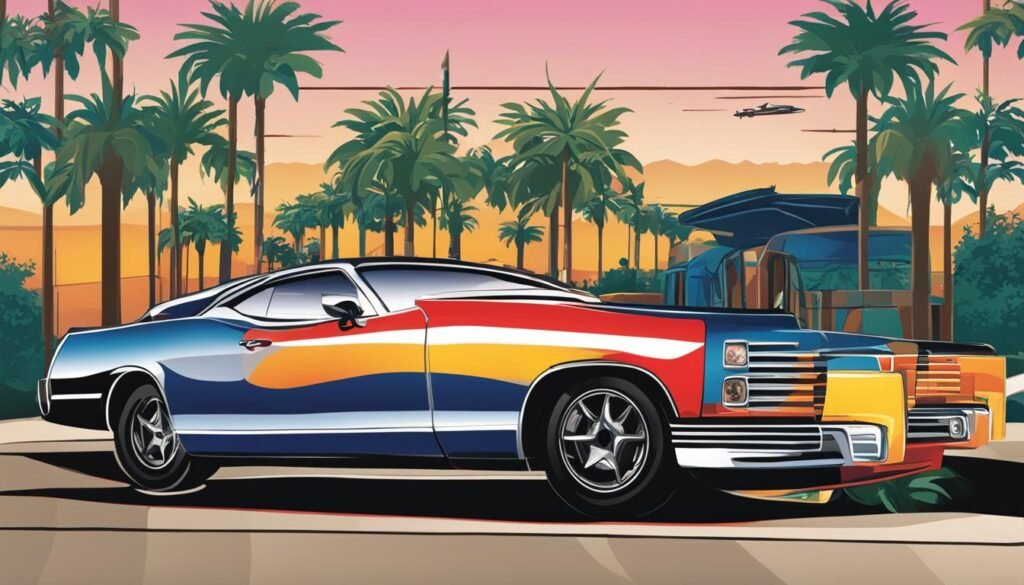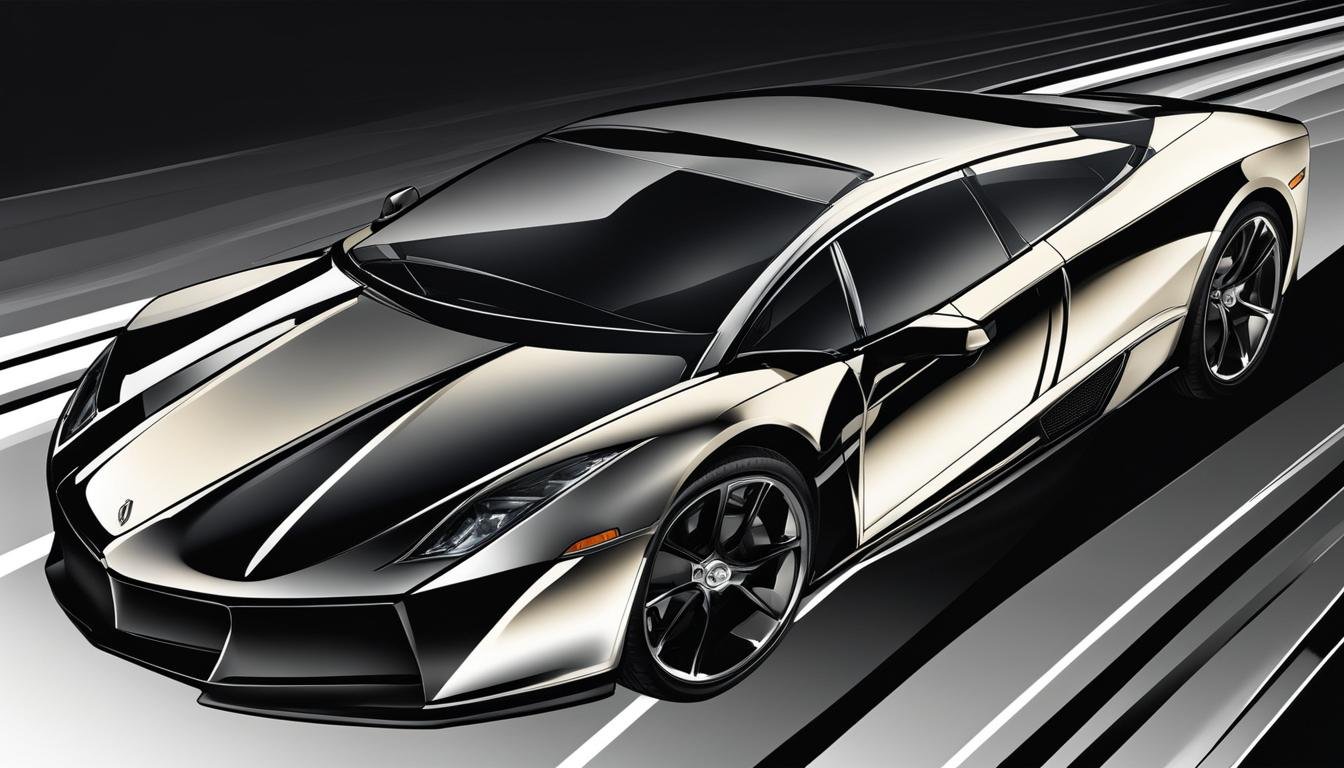Limo tint, also known as limousine tint, is a type of automotive window film that blocks out 95% of visible light and only allows 5% of light into the window. It is considered the darkest form of window tinting available on the market.
Limo tint offers various benefits, including heat and visible light blocking, enhanced privacy, and a sleek appearance. However, it’s important to be aware of the legality of limo tint in different states, as there are restrictions on its usage. It is commonly used in limousines, hence the name “limo tint.”
Key Takeaways
- Limo tint blocks out 95% of visible light and only allows 5% of light into the window.
- It offers benefits such as heat and visible light blocking, enhanced privacy, and a sleek appearance.
- Legal restrictions on limo tint usage vary by state, so it’s important to know the regulations in your area.
- Limo tint is commonly used in limousines, but it can be applied to other vehicles as well.
- Consider the specific regulations in your state and your preferences when choosing the right window tint for your car.
The Importance of Complying with Window Tinting Laws
When it comes to car window tinting, it’s essential to comply with the laws and regulations set by your state. Understanding and following these laws not only keeps you on the right side of the law but also ensures your safety and the safety of others on the road.
Each state has its own specific regulations regarding the darkness of window tint and the percentage of visible light transmission (VLT) allowed. The VLT percentage indicates how dark the tint can be, with lower percentages indicating darker tints. By complying with these regulations, you avoid the risk of fines, penalties, or having to remove and replace your window tint.
Complying with window tinting laws also helps to maintain visibility while driving. Tinted windows that are too dark can impair your ability to see clearly, especially at night or in low-light conditions. It’s important to strike a balance between the desired level of privacy and the need for adequate visibility on the road.
Consulting a Professional for Compliance and Options
To ensure compliance with window tinting laws, it’s recommended to consult a professional window tint provider. These experts have in-depth knowledge of the regulations in your state and can guide you on the compliant options available. They can help you choose a tint shade that not only meets the legal requirements but also suits your preferences for privacy, heat reduction, and style.
Understanding Visible Light Transmission (VLT) and Window Tint Shades
When it comes to choosing the right window tint for your car, understanding visible light transmission (VLT) and different tint shades is essential. VLT refers to the measurement of light waves that pass through a material, such as automotive window film. The lower the VLT percentage, the darker the tint will be.
Limo tint, with its 5% VLT, is the darkest option available and is commonly associated with the luxurious appearance seen in limousines. However, if limo tint is not to your liking, there are other popular tint shades to consider. These include 20%, 35%, and 50% VLT options, each providing varying levels of visible light blocking and heat reduction.
Choosing the right tint shade depends on your personal preferences, as well as the regulations set by your state. It’s important to ensure that the tint you select complies with the legal limits in your area. Some states have specific restrictions on the darkness of window tint, and failing to comply can result in fines or other penalties. Checking with local authorities or a professional window tint provider can help you determine the appropriate tint shade for your car.
State-Specific Regulations for Limo Tint
When it comes to getting your car windows tinted with limo tint, it’s important to be aware of the state-specific regulations governing its use. Each state has its own laws and restrictions regarding window tint darkness and visible light transmission (VLT) percentage. These regulations are in place to ensure safety on the road and prevent any obstructions to a driver’s view.
For example, in Arizona, limo tint is allowed only on the backside and rear windows, with a maximum VLT of 5%. However, even if the tint falls within the legal limits, law enforcement officers may still issue citations if the tint obstructs the driver’s view or poses a distraction while driving. It’s important to keep your tint free from smudges, bubbles, tears, or lines to comply with the law and avoid any legal issues.
Additionally, some states require vehicles with tinted windows to have dual side mirrors for enhanced visibility. This ensures that the driver has adequate visibility from all angles, even with the darker limo tint film applied. It’s always advisable to familiarize yourself with the specific regulations in your state and consult with professionals in the field to ensure compliance.
Choosing the Right Window Tint for your Car
When it comes to car window tinting, it’s crucial to choose the right tint that not only complies with state regulations but also meets your specific preferences. With various types of window tint available, understanding the options and making an informed decision is essential.
One way to determine the right window tint for your car is to take advantage of samples or examples provided by window tint providers. These samples allow you to visualize how each tint shade will look on your vehicle, helping you decide if it’s too dark or not. Consider the level of privacy and heat reduction you desire, as well as the style and appearance that you find most appealing.
It’s also important to consider the specific regulations in your state when choosing window tint. Different states have different restrictions on tint darkness and visible light transmission (VLT) percentage. Ensure that the tint you choose not only enhances the aesthetic of your car but also complies with the law to avoid potential legal issues.
By carefully considering your preferences, state regulations, and the guidance of window tint professionals, you can choose the right window tint for your car that offers the desired benefits such as heat reduction, privacy, and style.

It’s important to note that red, amber, or blue tint colors are not permitted for side windows in California. Additionally, if the rear window is tinted, dual side mirrors are required to ensure proper visibility. These regulations are in place to prioritize safety and prevent issues related to obstructed views or distractions caused by window tint.
Tint Darkness and Tint Reflection
California’s window tint laws focus on the amount of visible light transmission and do not specifically outline regulations for tint darkness or tint reflection. Visible light transmission (VLT) refers to the measurement of light waves transmitted through the tinted material. The specific limit for front side windows ensures that drivers have sufficient visibility for safe driving. It’s essential to choose a tint that complies with these regulations to avoid potential legal penalties or citations.
In summary, car owners in California must adhere to the state’s window tint laws, which outline specific requirements regarding the placement, darkness, and color of tinted windows. By following these regulations, drivers can ensure their tinted windows meet legal standards while still enjoying the benefits of window tint, such as heat reduction and enhanced privacy.
Adhering to Window Tinting Laws and Resources for Information
When it comes to window tinting, adhering to the laws is crucial to avoid any legal issues. Each state has its own specific regulations regarding the darkness of window tint and visible light transmission (VLT) percentage. To ensure compliance, it’s recommended to consult reliable sources for accurate and up-to-date information.
A good place to start is by reaching out to your local Department of Motor Vehicles (DMV) or law enforcement authorities. They can provide guidance on the specific regulations in your area and help you understand the permissible limits for window tinting. It’s important to note that window tint laws can change, so it’s always a good idea to stay informed about any updates or revisions.
In addition to governmental resources, professional window tint providers and manufacturers can offer valuable assistance and resources regarding window tint laws. They have the expertise to guide you through the compliance process and can help you choose the appropriate tint that meets both your preferences and legal requirements.
By staying informed and adhering to the laws, you can enjoy the benefits of window tinting without any concerns. Remember, when it comes to window tinting, it’s better to be safe and compliant than face legal consequences.
FAQ
What is limo tint?
Limo tint, also known as limousine tint, is a type of automotive window film that blocks out 95% of visible light and only allows 5% of light into the window. It is considered the darkest form of window tinting available on the market. Limo tint offers various benefits, including heat and visible light blocking, enhanced privacy, and a sleek appearance.
What are the benefits of limo tint?
Limo tint provides heat and visible light blocking, enhanced privacy, and a sleek appearance for your vehicle.
What are the different window tint shades?
Common window tint shades include limo tint (5% VLT), as well as 20%, 35%, and 50% VLT. Each shade offers varying levels of visible light blocking and heat reduction.
What are the regulations for limo tint in different states?
Each state has its own regulations regarding the darkness of window tint and visible light transmission (VLT) percentage. It is important to consult the specific rules in your state to ensure compliance with the law.
How do I choose the right window tint for my car?
When selecting window tint, consider the regulations in your state and your preferences for privacy, heat reduction, and style. It is recommended to consult professional window tint providers who can guide you on compliant options.
What are California’s window tint laws?
In California, sedans and SUVs/vans have specific window tint laws. For sedans, non-reflective tint is allowed on the top 4 inches of the windshield, front side windows must allow more than 88% of light in (or a minimum of 70% VLT if combined with factory-tinted windows), and any darkness can be used for back side windows and rear windows. The same rules apply to SUVs and vans.
How can I find reliable information about window tinting laws?
To ensure compliance with window tinting laws, consult reliable sources such as local DMV or law enforcement authorities. Professional window tint providers and manufacturers can also offer assistance and resources regarding window tint laws.

